Our quick guide to some of the latest and perhaps under-the-radar simulation tools from developers around the world, which are not only changing how analysis is conducted and the speed at which it can happen, but also unlocking analyses that might have been too slow or costly to perform in the past
Converge CFD – Convergent Science Wisconsin, US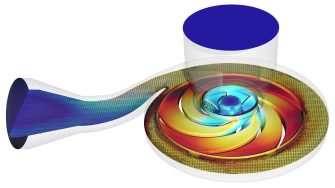
After years as a CFD consultancy focused on building meshes for clients, Convergent Science pivoted in 2008 to become a developer of its own CFD software. The company’s flagship product Converge CFD offers autonomous meshing capabilities that eliminate the grid generation bottleneck from the simulation process. Converge CFD Version 4 includes new solver options for speed and accuracy, new modelling capabilities, and tools that expand the software’s functionality and improve user experience. In 2024, the company upgraded its cloud computing platform, Converge Horizon, enabling users to submit and monitor jobs, while giving them access to real-time billing and usage data. Converge Horizon further streamlines the set-up process, with expanded collaborative capabilities, such as groups with shared storage spaces.
Wildkatze Digital Solutions Co – Hiroshima, Japan

Japan-based Digital Solutions Co launched its Wildkatze CFD software package in 2018, utilising robust Finite Volume and Finite Difference solvers, a pre-processing module and multiphysics models for a wide range of industrial problems. Flexibility and advanced solver customisation through user algorithms and C++ coding lie at the heart of its success, enabling users to set up different physics models that utilise different schemes in different regions of flow to enhance the reproducibility of physical phenomena and quality of analysis. For example, it is possible to set up an LES model in one region and k-omega turbulence model in another region. Users can incorporate their own physics models into Wildkatze for conducting advanced research.
Dive – Dive Berlin, Germany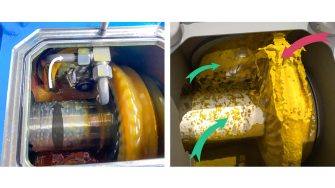
Smoothed Particle Hydrodynamics (SPH) simulation is at the core of this browser-based CFD software founded in 2018. SPH opens up new avenues for simulation in applications like gearbox lubrication, electric motors, sealing and water ingress, while the meshless nature means set-up is fast, offering more time for experimenting. By uploading an .stl file and with few clicks on its simple user interface, Dive lets users observe fluid behaviour and analyse wall properties like wetting and stress characteristics. A partnership with Microsoft Azure allows users to choose where they want their computations hosted, using servers in the US and EU. Included in subscriptions is “personalised and continuous guidance” from Dive’s team of CAE expert engineers.
Flow 3D – Flow Science, New Mexico, US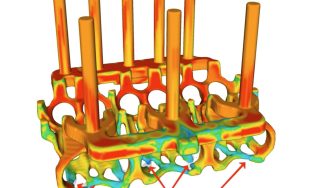
Founded back in 1980, Flow Science’s flagship CFD software Flow-3D is a powerful tool for complex fluid modelling problems using accurate simulations of free-surface flows provided by its proprietary TruVOF form of the volume-of-fluid technique. Applicable to a wide range of industrial applications and physical processes, Flow-3D also offers a range of specialised versions for areas like investment casting (featuring 11 process workspaces), welding and additive manufacturing with laser powder bed fusion and DED. Its general-purpose CFD software is used for a broad range of applications, including water and environmental, microfluidics, inkjets, consumer products and energy.
Luminary Cloud – Luminary Cloud California, US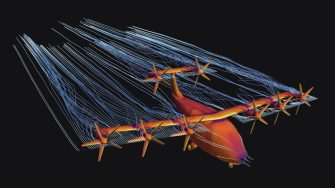
A simulation-as-a-service highfidelity CFD solver with cloud-based compute power, Luminary Cloud promises improved scalability, superior speed, better scale and more accurate data generation when compared to traditional software. With no downloads or installs, the process is secured via an ITAR-compliant platform that directly imports CAD, automating healing and mesh generation. Whether used for a single, large simulation or for numerous parallel simulations, Luminary combines modern AI/ ML techniques with physics-based constraints for much faster predictions and simplified workflows that can then be shared as a link to collaborators. Founded in 2019 by Jason Lango, an expert in HPC and cloud computing, and Juan Alonso, an expert in computational physics and aerospace engineering, Luminary Cloud was incubated at Sutter Hill Ventures, coming out of stealth in March 2024.
Monolith – Monolith London, UK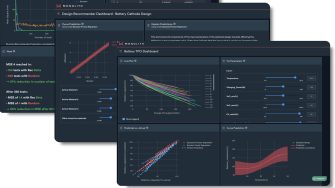
Monolith was founded in 2016 by Dr. Richard Ahlfeld, directly born from his PhD research at Imperial College London and NASA and boosted by an accelerator programme in 2018. With its own proprietary algorithms for handling 3D data, Monolith partnered with universities like Imperial, Cambridge and ISAE-Supaéro to develop its AI capability. Offered on a software-as-a-service basis, Monolith uses no-code AI to build pipelines and interactive ‘notebooks’ that load, explore and transform data for AI. This enables users to train and evaluate self-learning models and quickly find the best fit, while offering purpose-built tools for engineering and test-specific applications. Looking to accelerate AI adoption, Monolith allows users to train and upskill teams with inproduct tutorials, online learning tools and custom training options.
M-Star – M-Star Maryland, US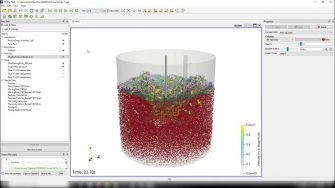
Pairing modern Lattice Boltzmann algorithms with up-to-the-minute GPU architectures, M-Star CFD software was built from the ground up to run millions and billions of lattice grid points. Founded in 2014, M-Star became part of Dotmatics’ science R&D software platform in 2024. Being designed for a more powerful computer architecture, M-Star uses Large-Eddy Simulations (LES), particle and bubble tracking, pushing what users can glean outside of the traditional Reynolds-averaged Navier- Stokes (RANS) based tools. Capable of simulating CFD-DEM, Non-Spherical Particles, Reacting Particles, Particle Breakup and Mixing Rules, the number of pharmaceutical manufacturers that use this product gives a sense of the trust levels engendered by its calculations, which can run on-premise or on the cloud via AWS.
Neural Concept – Neural Concept Lausanne, Switzerland
Founded in 2018 at EPFL, the Swiss Federal Technology Institute, Neural Concept’s platform aims to bring together data scientists, CAE and CAD designers on a single platform for deep-learning simulation capabilities. Users can swap quickly between different AI models, establishing model training and retraining strategies to harness the large amount of engineering data available within an organisation. A collaboration with Nvidia sees Neural Concept’s software deployable on nearly all of its GPUs and CUDA software. It is compatible with Dassault Systèmes Catia and Solidworks, PTC Onshape, Spaceclaim, Siemens NX, STAR-CCM+ and Simcenter. For example, Simcenter users can execute Simcenter CFD simulations with HPC power. Neural Concept is deployable on-premises, air-gapped, or via a SaaS or public cloud application.
Pacefish – Numeric Systems Munich, Germany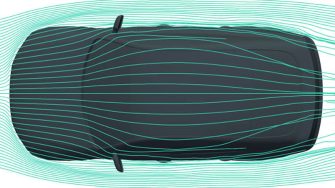
Pacefish is focused on analysing and optimising the complex aerodynamics of vehicles using transient Lattice- Boltzmann Method (LBM) simulation. Its transient modelling considers timedependent effects like vortex streets and dynamic vortex shedding, as well as pressure and velocity fluctuations. In addition to the Smagorinsky LES model, the software offers hybrid uRANS-LES (SST-DDES and SST-IDDES) as well as uRANS (K-Omega-SST) turbulence models. Capable of using up to 16 GPUs operating at almost ideal scaling, it can tackle simulations beyond one billion cells, with Pacefish reporting models of more than 100 million cells achieving turnaround times of just a few hours. Founded in 2016 by aerospace engineer Eugen Riegel, Pacefish can be used as an on-premise application using an organisation’s own hardware, or through SimScale as a web- and cloudbased application in a browser.
AI4Simulation – NXAI Linz, Austria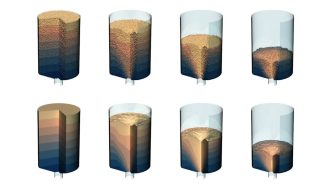
Founder Sepp Hochreiter is already noted for his contributions in the fields of machine learning, deep learning and bioinformatics and NXAI has a strong grounding for building AI systems. Founded in 2023, its AI4Simulation toolset, headed by former Microsoft researcher Johannes Brandstetter, is launching with particle-based simulations for modelling multi-fluid systems and fluid-material interactions. AI4Simulation’s first simulation project, NeuralDEM, is an end-to-end, deep learning alternative for modifying industrial processes such as fluidised bed reactors or silos. Aimed at scaling industrial and manufacturing processes, NeuralDEM captures physics over extended time frames. With deep learning, AI4Simulation looks to scale to millions of particles, but has an eye on the future, involving models of scales that surpass human understanding, marking the importance of AI-driven simulation technology.
PanX – Panoptimization Pennsylvania, US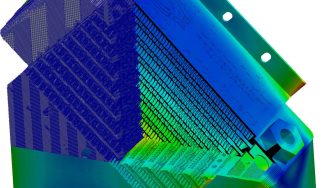
This voxel-based FEA simulation software was launched in 2022, lead by Dr Pan Michaleris and some of the team originally involved in Autodesk’s Netfabb Simulation. PanX’s voxelbased meshing allows for featureaware meshing that maintains fine details where needed, but allows for coarsening in bulkier areas that are less critical. Where traditional additive simulation tools solve the first few layers very quickly, before slowing to a crawl as elements are added, PanX eliminates that slowdown, letting models run faster over the entire solve on a typical mobile workstation toting 8 cores and 64Gb. It has varied uses across several 3D printing workflows, from optimising print surfaces to preventing overheating during LPBF builds, all with a focus on improving part quality and consistency.
LGM-Aero – PhysicsX London, UK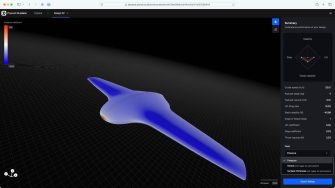
Born out of numerical physics and Formula One, PhysicsX was founded in 2019, came out of stealth in 2023, and joined the AWS Generative AI Accelerator in November 2024. Once set up, PhysicsX claims its tools can simulate complex systems in seconds, automatically iterating through millions of designs to optimise performance, while respecting manufacturing and other constraints. LGM-Aero is a geometry and physics model pre-trained on more than 25 million meshes, representing more than 10 billion vertices, and a corpus of tens of thousands of CFD and FEA simulations, generated using Siemens Simcenter STAR-CCM+ Nastran software. LGMAero demonstrates the creation of geometry and the assessment of physics performance in under one second, compared to the multiple hours required for traditional simulations.
PrePoMax – PrePoMax Maribor, Slovenia
PrePoMax is an open-source preand post-processor for the Calculix FEM solver, based on a modern user interface to speed up workflows. Developed predominantly by Matej Borovinsek, assistant professor of mechanical engineering at the University of Maribor in Slovenia, PrePoMax allows users to import geometry from various CAD formats and .stl files, using support from the open-source Open Cascade platform. Users can mesh a solid or a shell-based geometry using linear and parabolic finite elements. The product also supports an import of a file’s finite element mesh or uses the open-source Netgen library to perform meshing. PrePoMax results can be shown as animations and uses 2D plotting tools to represent history outputs.
Particleworks – Prometech Tokyo, Japan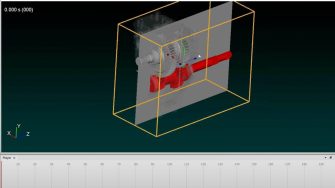
Particleworks uses the Moving Particle Simulation method developed by Professor Seiichi Koshizuka of the University of Tokyo, from which the company was spun out in 2023. Moving Particle Simulation excels in simulating liquid and multi-phase flows, offering a straightforward process for complex geometries with moving parts. The meshless solver and an intuitive interface make the simulation process simple and fast even for complex geometries with moving parts, like gears and shafts in a complete transmission or in an engine. The software leverages GPU computing power for fast and efficient simulations, while Particleworks is integrated with Ansys Workbench (Mechanical and Fluent) as well as with Romax, to help streamline simulation workflows. A partnership with European simulation software reseller EnginSoft provides support for customers.
SimScale – SimScale Munich, Germany 
With its browser-based platform, SimScale covers a broad range of physics simulation capabilities, including structural mechanics, fluid dynamics, thermodynamics and electromagnetics. Founded in 2012, its goal of high-fidelity engineering simulation on any hardware with instant access anywhere, anytime has since come to fruition, and today, SimScale has practically no limits when it comes to simulation size. Integrations with PTC Onshape and Autodesk Fusion have seen its popularity grow in recent years. A more recent partnership with Hexagon sees its Marc solver directly accessible through SimScale’s interface, putting advanced nonlinear structural analysis onto the cloud. SimScale has integrated AI capabilities, including an AI copilot that aids model set-up. A constantly learning AI model also helps select the best HPC compute infrastructure for each simulation automatically.
This article first appeared in DEVELOP3D Magazine
DEVELOP3D is a publication dedicated to product design + development, from concept to manufacture and the technologies behind it all.
To receive the physical publication or digital issue free, as well as exclusive news and offers, subscribe to DEVELOP3D Magazine here






